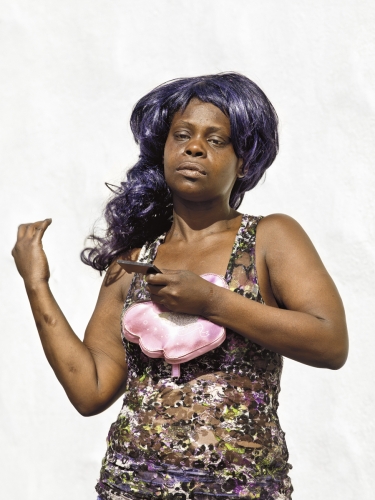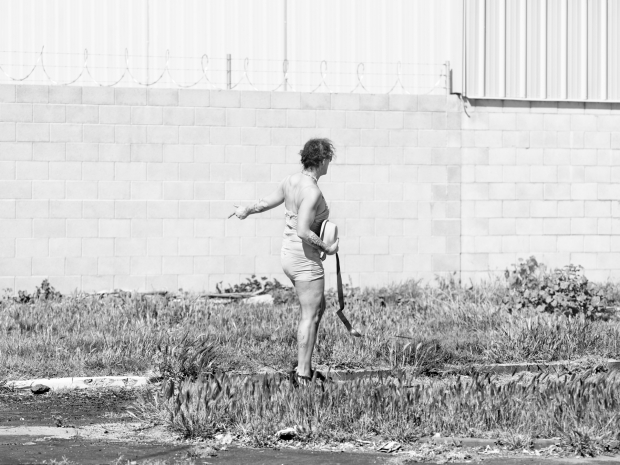Hundreds of Sparrows
I came across Katy Grannan‘s photographs at Salon 94 after visiting the New Museum next door. While individually they remain striking portraits, albeit not vastly unique in the photographic spectrum, what makes her work important lies in her documentary approach to the sleepiness, strangeness, and pathos of Modesto, California.
Also the setting of her upcoming documentary, The Nine, the pieces ranged from large-scale individual portraits, to landscapes, and video clips. The portraits are blazing in their preciseness and their size allows for the individuals to tower over the viewers, commanding the most space and attention in the room they are in. The men are shirtless, and the women sport outfits that look like they’re from the 80’s. A look of disillusionment permeates through their faces, however, and in the case of the women, it betrays the vibrancy of their clothing.
What’s really at the heart of Grannan’s work is a commentary on the American class system – ripe in the media these days thanks to shows like Making a Murderer – and “the other side of the American Dream.” Modesto was the location in The Grapes of Wrath and Dorothea Lange’s photograph Migrant Mother, both gripping portrayals of The Great Depression’s physical and emotional effects on the psyche and physicality. And essentially, Grannan’s work from Modesto serves as the setting of our contemporary depression. And the photographs speak for themselves in this regard – the subjects are present but not fully. People bathe in lakes, lounge in trees, and wait along the roadside. And in most, the glaring light of the sun literally and metaphorically shines light on the destitute landscape. And whereas Lange’s photograph is of a woman doing what she can to make it work, Grannan’s series rather shows our modern depression as individuals who have plateaued.
Though the show is closed now, I think it’s important to keep Grannan’s works in mind due to their aesthetic qualities but even more so as she uses her craft to meld art with socio-economic issues many in the art world are to keen to forget/ignore.
-Sabeena Khosla-



